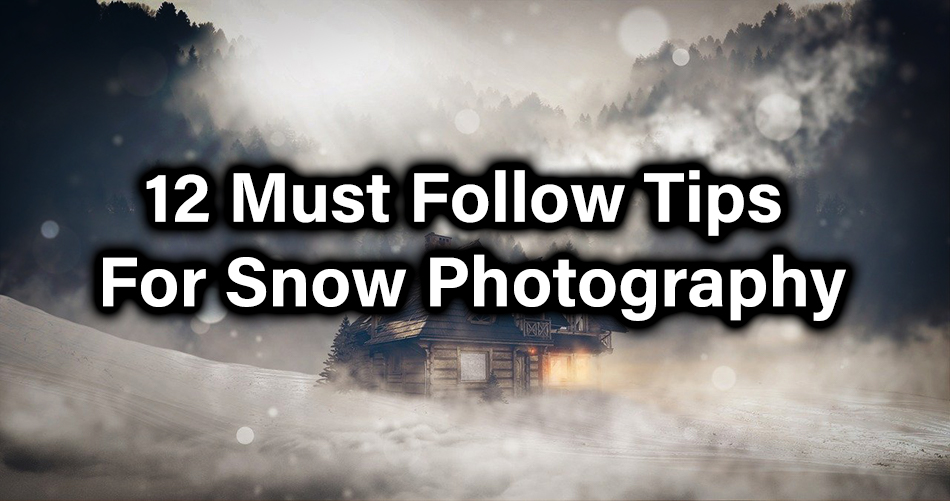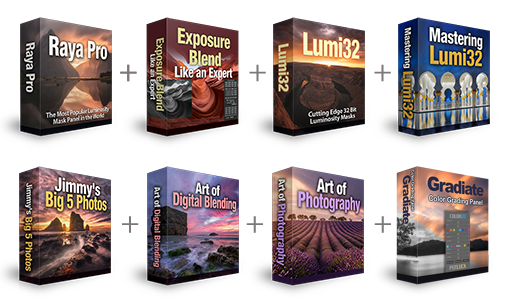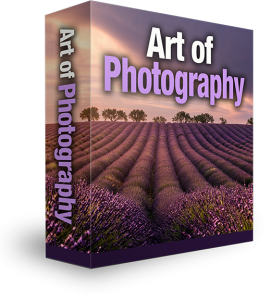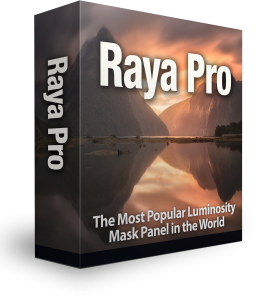12 Tips for Snow Photography
A snow-covered landscape is always an attraction for any landscape photographer. The later winter sunrises and earlier sunsets mean that we don’t have to get out of bed too early or stay out too late. The only downside is the cold. If we can brave the cold in our pursuit of a picturesque winter landscape photo, we need to make sure our venture isn’t in vain. Thanks to PhotoJeseph we can follow these 12 tips for snow photography.
Let’s Look At The 12 Tips for Snow Photography
1. Keep Your Batteries Warm
The longevity of a battery is significantly reduced in cold temperatures. Keeping your batteries as close to your body is a great tip for maintaining their charge. Also, now we know cold batteries discharge much quicker than warm batteries, it’s a good idea to take plenty of spares out with you during the colder days.
2. Use You Zoom Lens
A zoom lens will reduce the need to change lenses often. Each time you change your lens when your camera is cold, you increase the chance of creating condensation. Condensation can absolutely ruin your day especially if it gets on your camera’s sensor.
3. Use a Lens Hood/Shade
A lens hood will help reduce the light reflection from the snow and protect against lens flare. Also, the hood will keep any falling snow droplets from hitting the front element of your lens.
4. Keep Your Gear Dry
You can purchase rain covers for most cameras. There are some pretty cheap ones on Amazon these days. They might not be a perfect fit for your camera but, at least they’ll keep your kit dry. And, like Photo Joseph shows us, if all else fails you can simply use a zip-seal bag.
5. Polarizer or Neutral Density Filter
Using a polarizer while shooting a snowy scene will help you cut through over-powering glare. We often use ND filters to reduce the amount of light that passes through the lens and onto the sensor. These little filters can make a huge difference when shooting a bright white scene.
6. Keep Your Gear Clean
Although dirt isn’t something we immediately associate with snow, when you’re out in it you don’t tend to stay clean for long. With the air usually ladened with moisture from the snow, dirt carries very easily. Joseph advised that we take a few clothes and dedicate at least one just to the routine cleaning of the lens.
7. Exposure For Snow
Because of the brightness that we get while shooting in the snow, we need to adjust our exposure compensation to ensure the snow is white. With a balanced exposure, more often than not the snow will appear grey or have a colour cast.
8. Shoot in RAW
If we’re shooting winter scenes, there’s often a lot of white in our images. That’s what we want. But, it will cause issues with our exposure. If we shoot in Camera RAW, we can retrieve some of that lost data when it comes to post-processing.
9. Find Your White Balance
White balance is so important, especially when photographing in the snow. In location play around with your white balance settings in the camera. Try to get the closest to white as possible. Remember to keep an eye on your histogram. If there’s an unavoidable colour cast, we can easily remove that in post-processing.
10. Find Colour to Find Black & White
In a predominantly white scene, look for some colour to capture. Colour in a snow scene can really make your images pop. If an image lacks colour, it can also lack excitement. Consider making your less colourful images black and white.
11. Bring a Tripod
Landscape photographers almost always carry a tripod. The principles why Joseph advises you to carry a tripod are the same generic principles used in ordinary photography. To stabilise your camera during long exposures and also multiple exposures for exposure blending.
12. Bag Camera Before Going Indoors.
This is a MUST! Taking your camera into warmth from the cold will instantly cause condensation. Not only can this damage your camera, but it can also damage your lens. I carry several zip-seal bags and individually bag lenses and my camera body before retreating indoors. Top Tip – Take out your memory cards first!
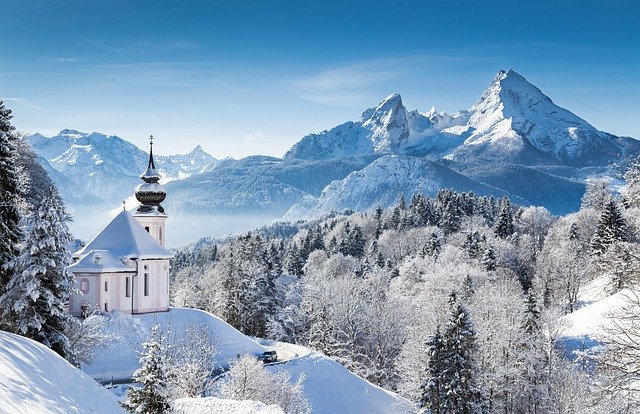
Image by Alex Prykhodko from Pixabay 
Image by Olya Adamovich from Pixabay 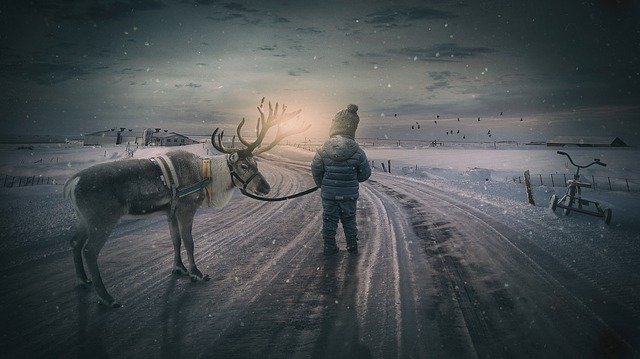
Image by kinkate from Pixabay 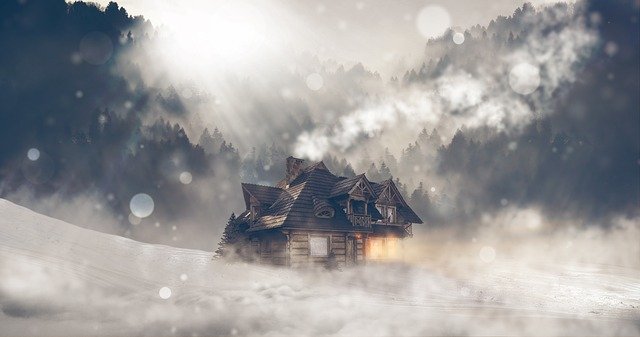
Image by Comfreak from Pixabay 
Image by Klaus Dieter vom Wangenheim from Pixabay 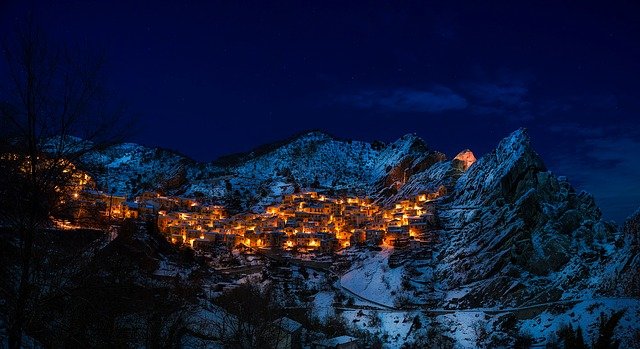
Image by David Mark from Pixabay
More Articles On Snow Photography
One of the best winter photographers is a good friend of ours. Ole Henrik SkjelstadI, he does an absolutely amazing job at capturing colourful winter scenes. Be sure to check out his website.
A very recent article was published on the Landscape Photographer Of The Year website called Winter Photography Tips by Vanda Ralevska.
Another fantastic snow photographer I have come across while researching for the article is Grant Gunderson. Grant’s website shows some fantastic examples of Black and White Winter Photos.
Shooting in the snow can offer up so much wonder. From Ice caves to frozen waterfalls, frozen lakes to gigantic mountains. It truly is the most amazing type of weather to photograph in, Here are the Top 10 Best Winter Photography Locations Around The World.
Thank you for reading this article, be sure to sign up for our newsletter for more tutorials and great offers.
Enter your email below and join our community of more than 100,000 photographers who have
- Subscribed to our newsletter.
- Downloaded our FREE Photoshop Course.
- Use our FREE Easy panel in Photoshop.
